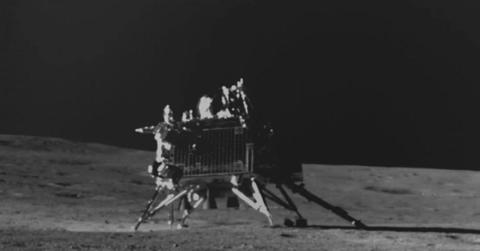Over the Moon: India's Propulsion Module Returns to Earth's Orbit After Completing Successful Space Mission

India made its first moon landing on August 23, 2023.
Dec. 14 2023, Published 9:02 a.m. ET
The propulsion module, crucial to India's historic lunar landing in August, has completed its mission and departed the moon's orbit to re-enter Earth's orbit.
India's space agency, the Indian Space Research Organization (ISRO), revealed that the module had more remaining fuel than anticipated, prompting the decision to bring it back home.
The Chandrayaan-3 mission aimed to achieve a soft landing on the moon and eventually retrieve lunar soil samples, officials said.
Launched on July 14, the spacecraft successfully landed the Vikram Lander on the moon on Aug. 23, followed by the deployment of the Pragyan Rover.
The lander and rover, equipped with scientific instruments, conducted experiments for nearly two weeks, marking India as the fourth country to accomplish a lunar landing, following the United States, Russia and China, according to ISRO.
Despite unsuccessful attempts to revive the lander and rover, which have been in slumber since the nearly two weeks of experimenting, the ISRO declared the mission a complete success, stating, "The mission objectives of Chandrayaan-3 have been completely met."
Simultaneously, the propulsion module, resembling a large box with a solar panel and an engine, remained in orbit and conducted the Spectro-polarimetry of Habitable Planet Earth (SHAPE) experiment.
This experiment, designed to observe Earth from lunar orbit in near-infrared light, aimed to capture characteristics that make our planet inhabitable, CNN reported.
Never miss a story — sign up for the Front Page Detectives newsletter. Be on the scene the moment news breaks.
Originally intended for a three-month data collection period, the propulsion module had surplus propellant due to the precise positioning by the launch rocket.
The ISRO decided to utilize the excess fuel to gather additional information for future lunar missions and demonstrate mission operation strategies for a sample return mission. The hope is to leverage this information for planning future moon landing missions, potentially involving the return of lunar soil samples to Earth.
Become a Front Page Detective
Sign up to receive breaking
Front Page Detectives
news and exclusive investigations.
